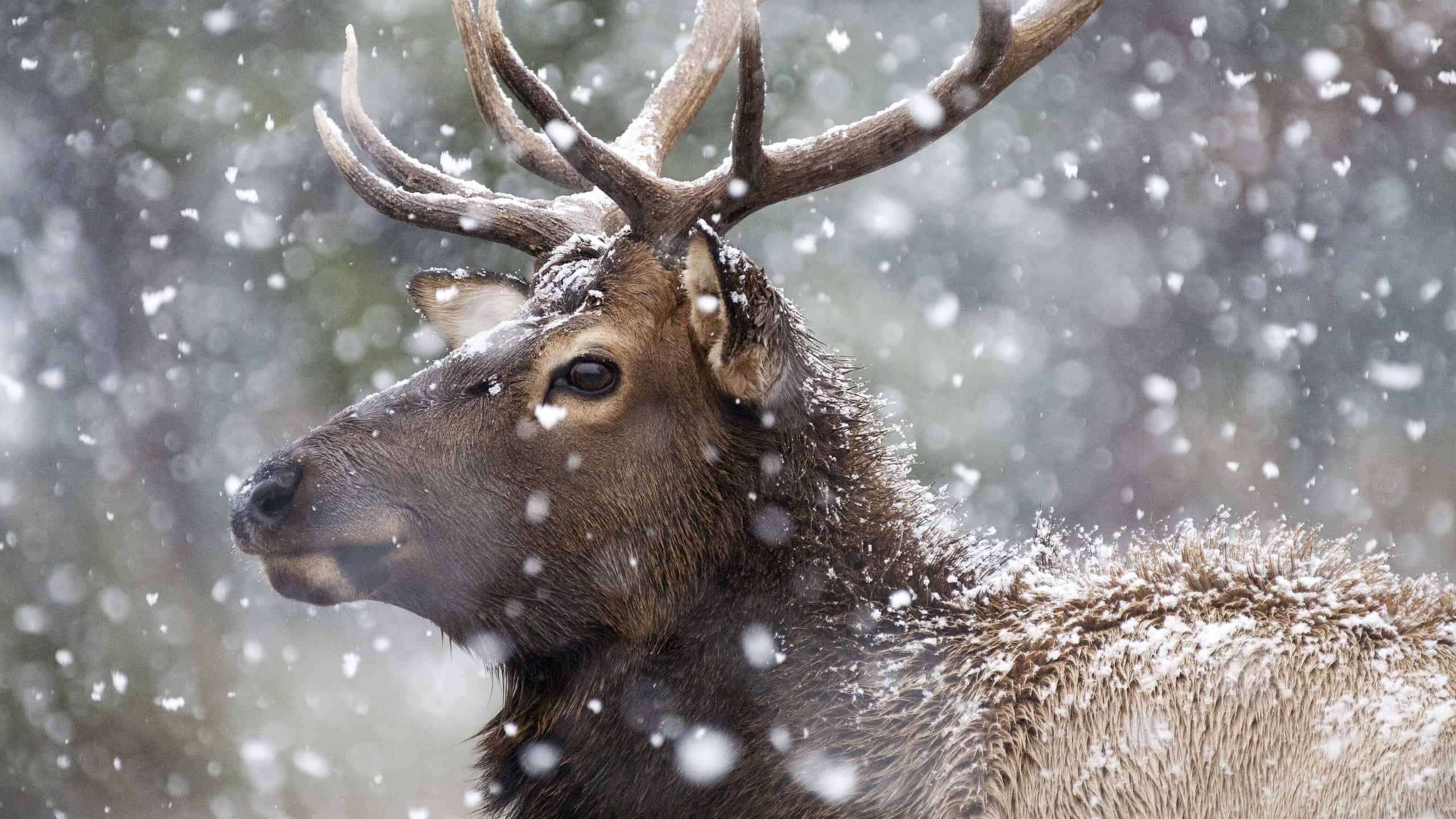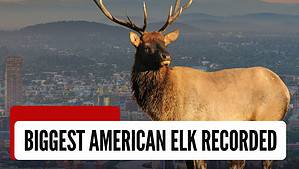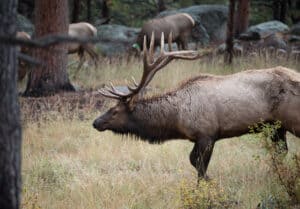Continue reading for our analysis...

Filmed in the Canadian Rockies, this insightful footage shows us the ‘before’ and ‘after’ view of a mature male elk referred to locally as ‘Sheriff’ shedding his antlers. It’s like the most extreme haircut you can imagine. His antlers have reached their maximum size and then…they’re gone. They leave sore-looking stubs on his head which eventually heal over and get ready to start growing again!
Elk Herds in the Rockies
Banff National Park is located in Alberta’s Rocky Mountains and is home to some spectacular animals, not least the elk. Also called wapiti, they are one of the largest land-dwelling animals in North America and like to live in mountain meadows, forests, and forest edges.
All male elks grow antlers which are made of bone and these can grow up to an inch a day making them among the fastest-growing animal tissue on the planet. When fully grown, they can reach up to 20 inches and can weigh 20 pounds each. When the antlers are growing, they are covered in velvet-type tissue which provides a blood supply. Before the breeding season, the velvet dries up and is rubbed off.

Elk antlers can weigh up to 20 pounds each
©Tom Reichner/Shutterstock.com
Why Do Elk Have Antlers?
The male hormone, called testosterone, causes the antlers to form. Testosterone levels are high when the antlers are growing and when the hormone levels drop in early spring, they fall off.
If you are a male elk, antlers are very useful appendages. They can defend you against predators, as well as knock fruit down from high branches. Their main purpose, however, is to do with attracting a mate. They can be used to scrape marks on trees to display your dominance and during the rutting season, they are used to battle with other males for mating rights.
Meanwhile, the female elk are checking out the size of the male’s antlers. She is looking for both size and symmetry. Males with larger antlers are healthier and are therefore the best ones to breed with. Asymmetrical antlers can be a sign of an injury and males that are prone to injury may not be that agile or athletic which is not something you want for your offspring!
Thank you for reading! Have some feedback for us? Contact the AZ Animals editorial team.






